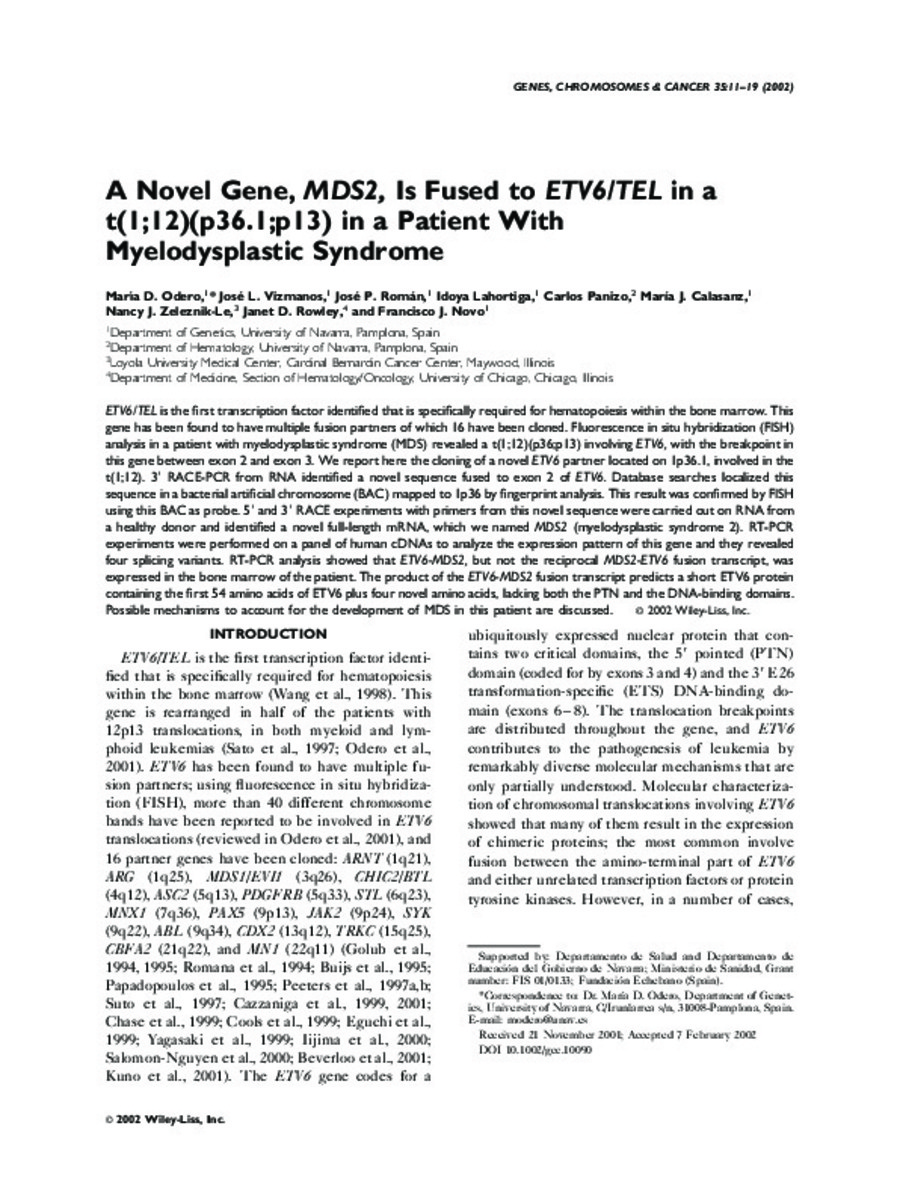A novel gene, MDS2, is fused to ETV6/TEL in a t(1;12)(p36.1;p13) in a patient with myelodysplastic syndrome
Keywords:
Chromosomes, Human, Pair 1/genetics
Chromosomes, Human, Pair 12/genetics
DNA-Binding Proteins/genetics
Genes, Neoplasm/genetics
Myelodysplastic Syndromes/genetics
Oncogene Proteins, Fusion/genetics
Proteins/genetics
Repressor Proteins/genetics
Publisher:
Wiley-Blackwell
Citation:
Odero MD, Vizmanos JL, Roman JP, Lahortiga I, Panizo C, Calasanz MJ, et al. A novel gene, MDS2, is fused to ETV6/TEL in a t(1;12)(p36.1;p13) in a patient with myelodysplastic syndrome. Genes Chromosomes Cancer 2002 Sep;35(1):11-19.
Statistics and impact
0 citas en

0 citas en

Items in Dadun are protected by copyright, with all rights reserved, unless otherwise indicated.









